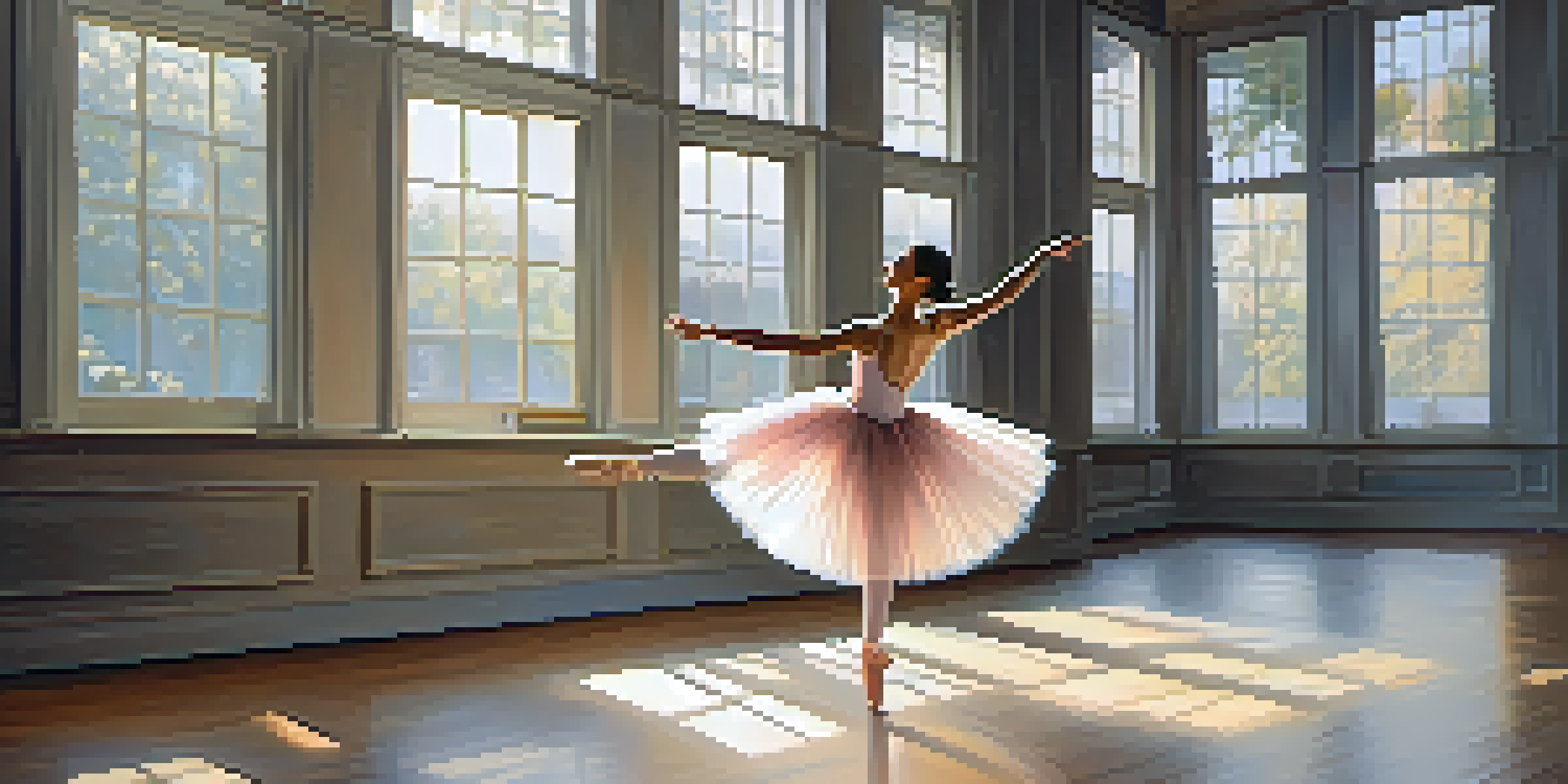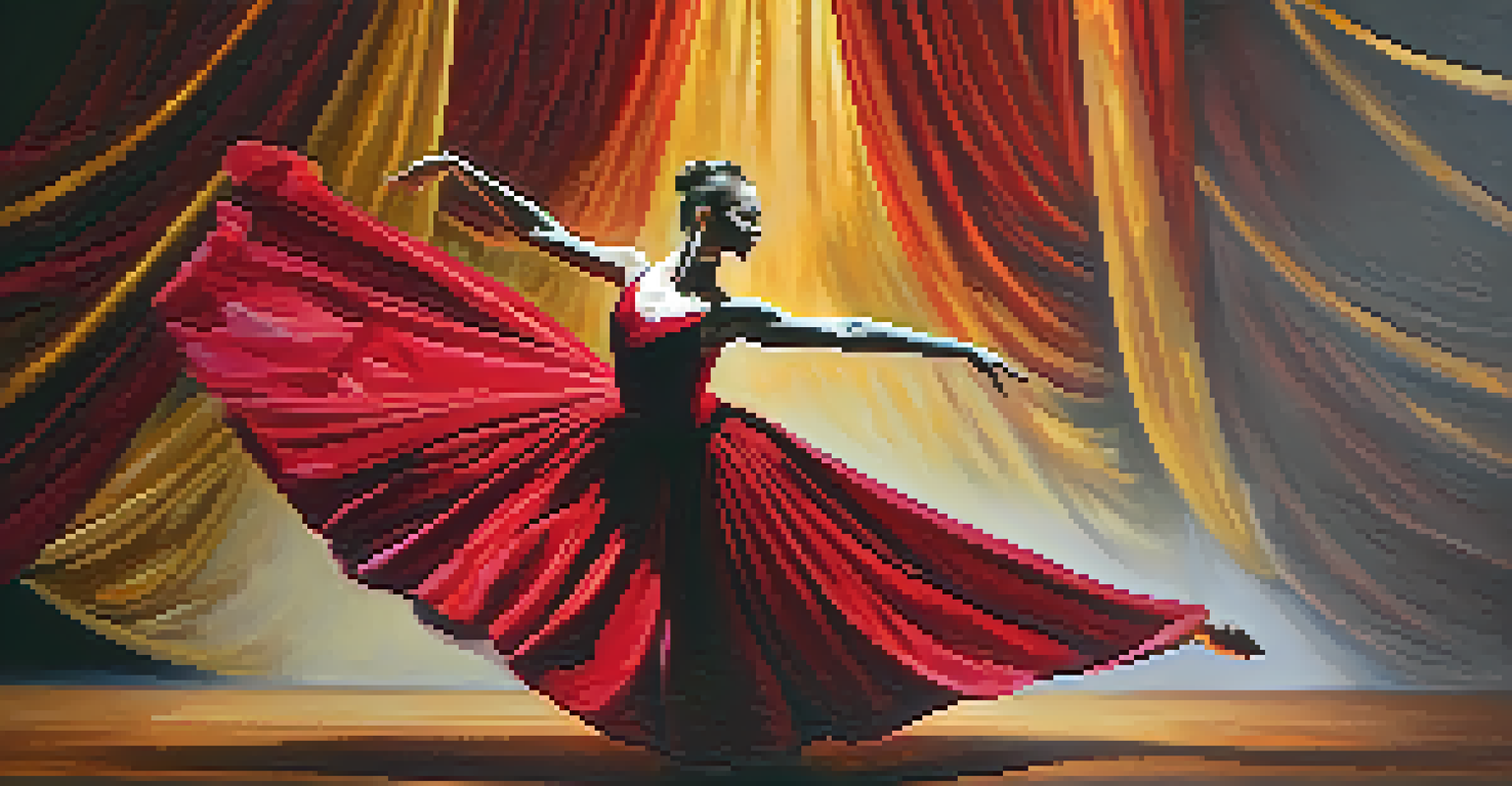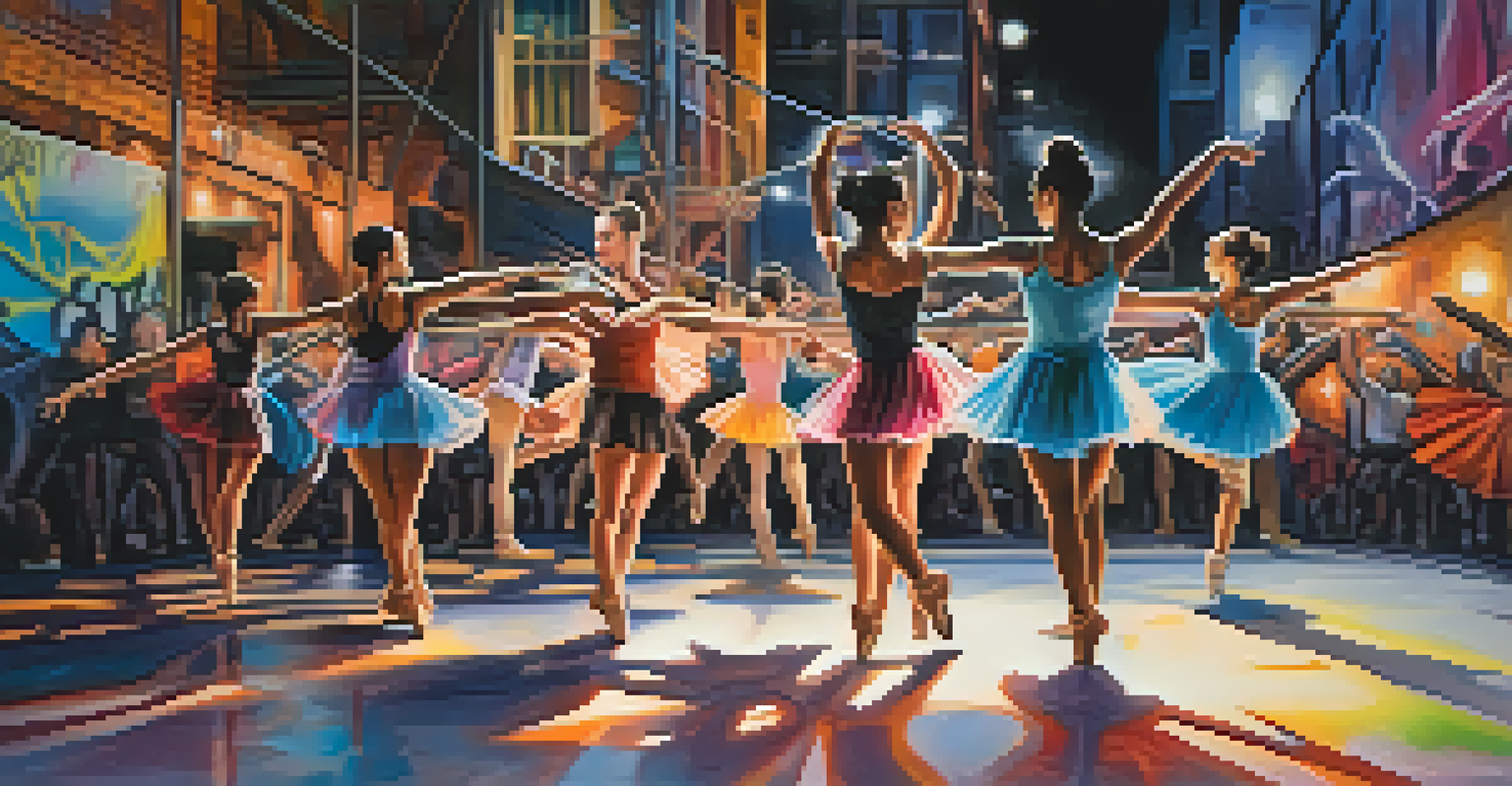Exploring the Different Styles of Classical Ballet Techniques

Understanding the Roots of Classical Ballet Techniques
Classical ballet has a rich history that dates back to the Renaissance period. Originating in Italy, it blossomed in the royal courts of France and Russia, evolving into the sophisticated art form we know today. Each phase of its development has added new dimensions to the techniques and styles that dancers use.
Dance is the hidden language of the soul.
At its core, classical ballet emphasizes grace, form, and precise movements. The foundational techniques, such as pliés and tendus, are crucial for building strength and flexibility. These basics not only serve as the building blocks for more advanced movements but also connect dancers to the tradition of this timeless art.
Understanding the historical context of these techniques helps dancers appreciate the nuances of their craft. It’s a journey through time, allowing them to embody the artistry of past masters while infusing their personal expression into performances.
The French School: Elegance in Motion
The French School of ballet, often referred to as the Paris Opera Ballet style, is known for its elegance and fluidity. This technique emphasizes the importance of lines and the aesthetic beauty of movement. Dancers trained in this style are often recognized for their gracefulness and ability to convey emotion through their performance.

One of the key features of the French style is its focus on the upper body, which plays a significant role in expressing the dancer's intentions. The use of port de bras, or the carriage of the arms, enhances the overall visual appeal. This technique allows dancers to create a seamless flow between their upper and lower body movements.
Classical Ballet's Rich History
Classical ballet has evolved through various cultural influences, enriching its techniques and styles over time.
Ultimately, the French School encourages dancers to develop their unique voice while adhering to classical principles. This blend of tradition and personal expression makes it a captivating style that continues to inspire countless performers.
The Russian Style: Power and Passion
The Russian style, epitomized by the Vaganova method, is characterized by its dramatic flair and powerful movements. This technique combines strength with deep emotion, encouraging dancers to connect with their character on a profound level. The emphasis on athleticism and expressiveness sets it apart from other styles.
Ballet is a dance executed by the human soul.
In the Russian tradition, the use of grand jetés and impressive turns showcases the dancer's technical prowess. The training involves rigorous physical conditioning, ensuring that dancers can execute complex choreography with ease. This focus on strength doesn’t just enhance performance; it also fosters confidence and stage presence.
Moreover, the Russian style celebrates storytelling through dance. Each performance becomes a narrative, allowing the audience to experience the dancer's journey. This powerful connection between the dancer and the audience is what truly makes the Russian style unforgettable.
The Italian Style: Classic and Athletic
The Italian style of ballet, known for its technical precision and athleticism, has a unique flair that captivates audiences. This technique emphasizes strong, grounded movements, which are complemented by a vibrant sense of energy. Dancers trained in this style are often recognized for their impressive jumps and turns.
One of the hallmarks of the Italian style is its focus on the dancer's physicality. The training often involves rigorous exercises that build strength and stamina, enabling dancers to perform with both power and grace. This combination of athleticism and artistry creates a visually stunning experience for viewers.
Diverse Techniques Enhance Expression
Mastering different ballet styles allows dancers to develop versatility and infuse their performances with personal creativity.
Additionally, the Italian style encourages creativity and individuality. Dancers are often given the freedom to explore their own interpretations within the classical framework, making each performance a unique expression of their artistry. This blend of tradition and innovation keeps the Italian style fresh and exciting.
The American Style: Fusion and Innovation
The American style of ballet is a melting pot of influences, blending elements from various techniques to create a unique approach. This style often incorporates contemporary movements, making it more accessible to a wider audience. Dancers in this tradition are known for their versatility and ability to adapt to different styles.
One notable aspect of the American style is its emphasis on storytelling through dance. Choreographers often draw from diverse cultural backgrounds, allowing for a rich tapestry of narratives and emotions. This fusion of styles encourages dancers to explore new ways of expression, pushing the boundaries of traditional ballet.
Moreover, the American style celebrates collaboration across disciplines, inviting influences from jazz, modern dance, and even hip-hop. This innovative spirit not only keeps the art form alive but also inspires the next generation of dancers to think outside the box and embrace their individuality.
Exploring Contemporary Ballet: A New Dimension
Contemporary ballet merges classical techniques with modern influences, creating a dynamic and evolving art form. This style often challenges the traditional boundaries of ballet by incorporating unconventional movements and themes. Dancers trained in contemporary ballet are encouraged to express their individuality while maintaining a strong foundation in classical technique.
The beauty of contemporary ballet lies in its flexibility and adaptability. Choreographers experiment with different forms of movement, allowing dancers to explore new ways of storytelling. This evolution not only enhances the performance but also invites the audience to engage with the art on a deeper level.
Contemporary Ballet's Innovative Spirit
Contemporary ballet merges classical techniques with modern influences, inviting new forms of storytelling and artistic expression.
As a result, contemporary ballet attracts a diverse audience and inspires new generations of dancers. By blending the old with the new, contemporary ballet breathes fresh life into the classical tradition, ensuring its relevance in today's artistic landscape.
The Importance of Mastering Technique Across Styles
Mastering the various techniques of classical ballet is crucial for any aspiring dancer. Each style offers unique insights into movement, allowing dancers to develop a well-rounded skill set. This adaptability is essential in the competitive world of dance, where versatility can set a performer apart.
Moreover, understanding different styles enhances a dancer's artistic expression. By borrowing elements from various techniques, dancers can infuse their performances with personal flair and creativity. This exploration of styles fosters a deeper appreciation for the art form as a whole.

Ultimately, the journey of mastering classical ballet techniques is not just about perfecting movements; it’s about discovering one’s voice as an artist. Embracing the diversity of styles leads to a richer, more fulfilling dance experience.
Conclusion: Celebrating the Diversity of Classical Ballet
The world of classical ballet is a vibrant tapestry of styles, each with its own unique elements and techniques. From the elegance of the French School to the power of the Russian style, these diverse approaches enrich the art form. By exploring different techniques, dancers can draw on a wealth of inspiration to shape their artistry.
As the dance landscape continues to evolve, the fusion of classical and contemporary styles invites new possibilities for expression. Dancers are encouraged to embrace their unique journeys while honoring the traditions that have paved the way. This balance between legacy and innovation keeps the spirit of classical ballet alive.
In celebrating the diversity of classical ballet, we not only appreciate its rich history but also look forward to the future of this exquisite art form. Each dancer contributes to this legacy, ensuring that ballet remains a dynamic and beloved expression of human creativity.